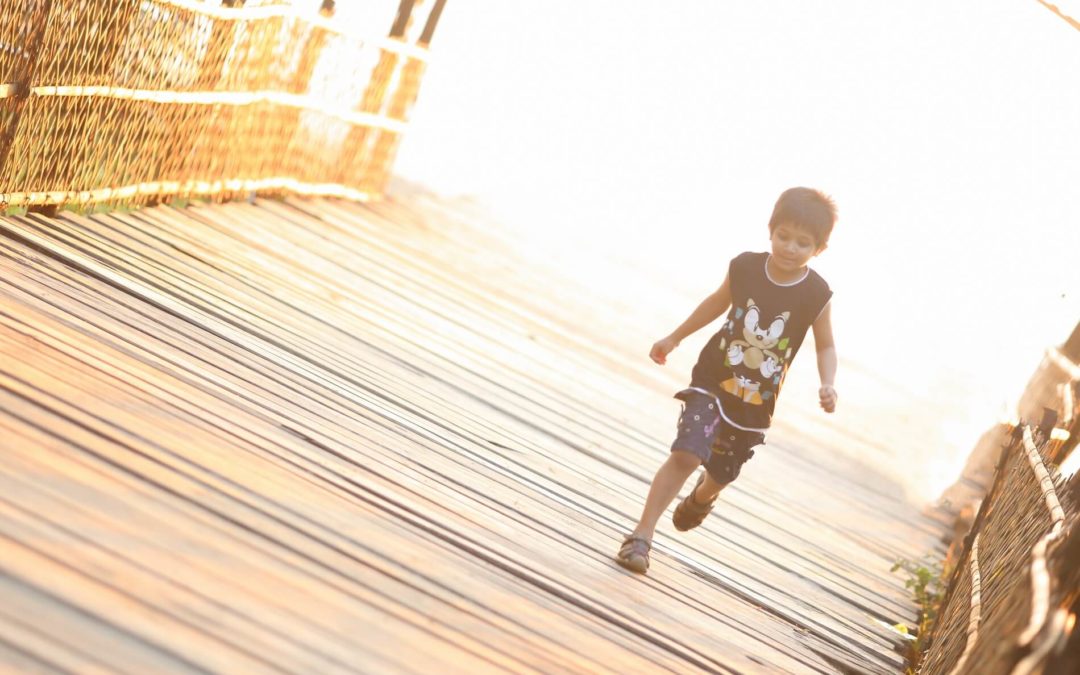Maude Le Roux returns this week to discuss Impulsivity and all of the factors to consider when addressing impulsive behaviour. Maude is an occupational therapist who runs A Total Approach in Glen Mills, Pennsylvania. She is also a DIR Expert Training Leader with ICDL. So many of our children struggle with impulsivity, being able to wait, and being able to control their behaviour when they get an impulse to act when they know otherwise. Maude sheds light on this process for us.
A Closer Look at Impulsivity with Maude Le Roux
What is Impulsivity?
We know from past podcasts with Maude that impulsivity is related to timing and sequencing, and is a part of development in the 4th functional emotional developmental capacity of the Developmental, Individual differences, Relationship-based (DIR) model, but today we want to dive deeper. Maude says that there is a neuro, a cognitive, and an adaptive flavour to the process of impulsivity. She always asks her staff who describe a child as impulsive why they used that term. No behaviour is without a reason. We always have to chase the ‘why’.
Maude describes impulsivity as the ability of the prefrontal cortex not to exert enough inhibition over the nervous system to allow you to be able to wait. Some of the theories talk about it as a cognitive behaviour. A decision-making process not to wait implies that the decision can be dealt with in a cognitive way. But an impulse is instinctual, which is quite far removed from the cognitive process. Maude says it doesn’t mean that you can’t sit down and have a great discussion so the child understands what they did or did not do after-the-fact, but in the moment is when the impulsivity occurs.
Dr. Gordon Neufeld talks about how impulses happen to us and are out of our control until your prefrontal cortex is developed. He describes the prefrontal cortex as a mixing bowl where you can hold two thoughts at the same time such as, “I want to spill that coffee” versus, “I know I shouldn’t.”
Characteristics of Impulsivity
There are three areas we can think about when it comes to impulsivity, Maude says. First, it’s nervous system related. The nervous system has to mature in a certain way. The executive pathways in the brain, namely the dorsal lateral pre-frontal cortex pathway, the DLPFC, only fully develops by the age of 21 to 24 which means that we have from at least 5 months after in utero when your executive function starts developing until 21 to 24 years to develop the control necessary to grade your impulses.
Second, because it’s developmental in nature, the nervous system has to develop through stages in order to gain that maturity. And third, it’s connected to timing and sequencing. It’s about delayed gratification: not being able to wait; I want it right now. In the moment, when a child gets the urge, they don’t have the development necessary to understand what waiting means.
It can also be sensory-seeking which is the primal brain, which is the subconscious area. It lies in the regulation system. Before you can make any dent into impulsivity, you must deal with regulation. Impulsivity comes later when you are working on timing, sequencing, and praxis. The thought has to go into planned, full behaviour but if the child doesn’t have access to that yet, in that moment the reward is the sensory seeking. You can only think about it later.
When we have difficulties with timing, i.e., not really grasping what is tomorrow, this evening, yesterday, then what does it mean to wait? So many of our kids are locked in the present moment. In that moment, all of the past is gone. It’s only that moment that exists. So when we target behaviour therapies in terms of rewards, it doesn’t really have an impact if the child doesn’t have these constructs, Maude says.
When we delay, we increase the anxiety. If the child can get an immediate reward of their impulse, it can also curb their anxiety so it helps the child cope with the regulatory struggle. It’s regulation–their sensory system driving them, not bad behaviour. So from the child’s perspective, being impulsive is a positive behaviour. It’s developmental. Advent calendars prepare our young children for the concept of waiting. It’s a developmental process. In most things our kids on the spectrum are developing at a different pace.
Make No Assumptions
It’s an instinctive urge in the primal brain that’s asking a child to find release in an action that they know they shouldn’t do but can’t stop themselves from doing. The cognition might start to come in, but not quickly enough yet. At some point it starts coming in, but at this point, they still can’t stop themselves. Each behaviour is from the child’s perception. We think the child is naughty, stubborn, or willful because he doesn’t see things our way, but he’s only thinking in his way.
Dr. Neufeld says that’s why behavioural methods are so detrimental. You end up using what the child values against them which just damages the relationship. If you can’t be yourself and feel safe with the people who are raising you, you aren’t free to have that development. Dr. Tippy has even said that punishment and prompting will thwart development and slow it down.
So what do parents do about it?
I gave Maude some examples of impulsive (and disruptive) behaviours of my son’s. For parents, it’s a balance of risk and reward how much you try to control. It’s a struggle to know the balance for parents. If you allow this behaviour now, what is the gain in this situation? We can’t get further if we only stick with our expectation. We sometimes have to let go to see what the child’s expectation is. Dr. Tippy says the real world is out there. You can only control so much but you need to prepare your children for the real world. It can be a constant juggling act. There is no ideal. It’s what works for your child in a given moment.
Targeting impulsivity with therapy
Behavioural methods are not conducive to success. You can get some success from cognitive rewards if the child can store information on a longterm basis, but that comes later in development. So first, Maude works on regulation using Tomatis sound training, and occupational therapy with reflex integration to set up a foundation. It can take quite awhile and can tax the parents’ patience, but it works.
Next, most important for impulsivity is working on timing. It could be an OT doing pronation exercising on a metronome beat. You can download a metronome beat for free and start at around 22 beats per minute going no more than 54 beats per minute. You can do anything on the beat but your body has to be ready to receive timing. A dysregulated system does not receive timing which is why the initial focus is always on regulation.
But even if timing interventions are begun too early, the brain doesn’t forget. The moment the brain is regulated, the child can access the previous experience of learning timing. Regulation can take years but it takes different forms. Maude doesn’t go for overnight cures. She will push hard when she pushes but she then likes to have the time for the brain to adapt. The child remembers all the years of feeling out of control and disorganized. The fear in the child is that it might return, so the child needs time before they can finally settle into the new and create an adaptive response that is new in a different regulatory realm. We have to stick to the child’s timeline.
The role of DIR/Floortime
At the center of the core of everything in Dr. Stanley Greenspan‘s model is the child’s intrinsic motivation to want to move forward and to feel secure enough to move forward. When to start the timing intervention is a crucial piece. It’s going to take bringing timing into the mix as they child is ready. As neurotypical toddlers start speaking we do nursery rhymes and sing to them which introduces timing (right ear) and rhythm (left ear). Rhythm sets up the piece for timing.
That’s why we talk about co-reciprocity in DIR/Floortime techniques. Greenspan fit in Individual differences into the developmental stages. Emotional and sensory regulation coincide within each stage in different ways. We can’t push the child too fast nor too soon. We can all get the sound training, the timing programs or reflex integration but the question is when? We need to follow the developmental trajectory.
Impulsivity can look so different across different sensory profiles. There are some children on the spectrum who are quiet and stay still. Their impulsivity might look more like rigidity. They want to stay in that safe zone that Dr. Rick Solomon discussed in this past podcast. The compulsive has an impulse is to stay put. It’s not a willful response, Maude says. It’s creating the boundary within which they feel safe to move.
It’s the same instinctual process expressed in a different way, she says. The rigid child can also be the shut-down child. We have to get to a period of being disorganized to know our boundaries and to know one’s boundary from another’s. As we mature, disorganization has a key feature to help the growth process to cope with stress when it happens, to not become disorganized.
Development guides everything. The D: Meet the child where they are developmentally. The I: Take into account the child’s Individual differences. The R: Focus on the Relationship. It always comes back to the DIR model. So Maude says to look for the signs of what your child is doing rather than listening to evaluations that tell you what your child cannot do. Yes, perhaps my son is still throwing things on the refrigerator but he’s also choosing Pete the Cat books, demonstrating where he is developmentally.
A huge thank you to Maude for taking the time to share her knowledge with us. If you enjoyed this podcast, please consider sharing it on Facebook or Twitter, and if you have any related comments, questions, or experiences you’d like to share, please enter them below in the Comments section.
Until next time, here’s to affecting autism through playful interactions!



